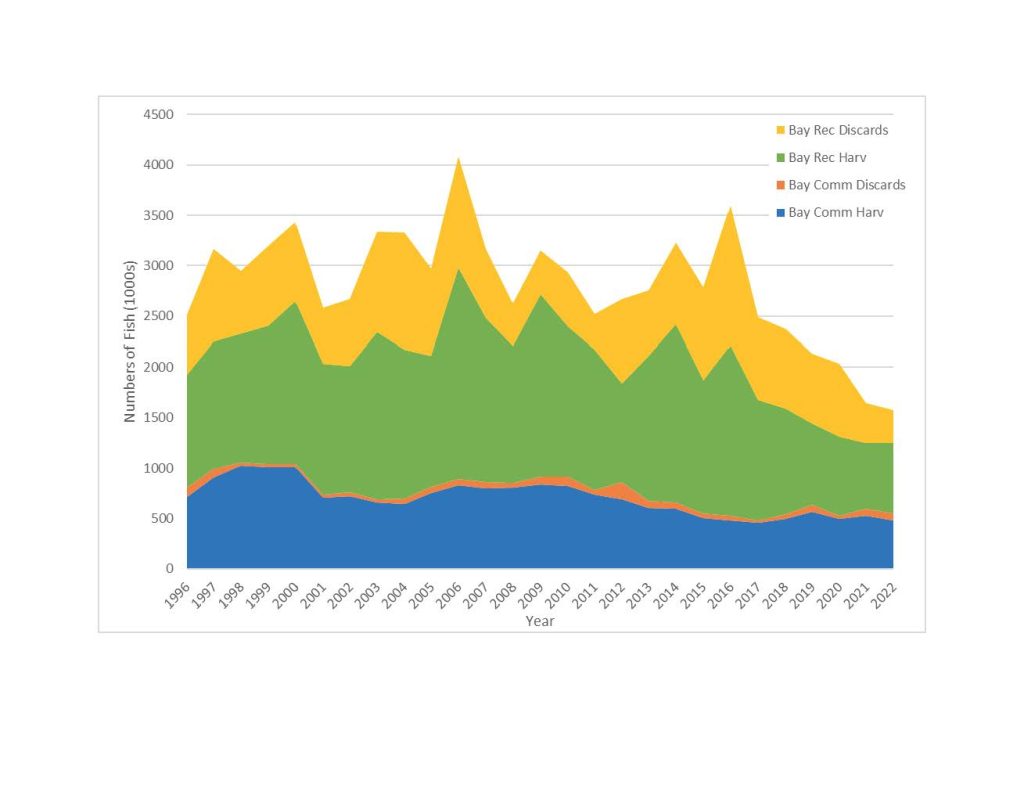Maryland’s Summer Closure of Striped Bass Fishing Begins July 16

Maryland Department of Natural Resources staff conduct the annual juvenile striped bass survey, to monitor the annual reproductive success of the species. Maryland DNR photo.
The Maryland Department of Natural Resources reminds recreational anglers that targeting striped bass in the Chesapeake Bay and its tidal tributaries is prohibited from July 16 through July 31.
This closure is necessary to protect the species, because when water and air temperatures rise in the hottest part of summer, fish are more vulnerable to dying after being caught and released.
While recent research has suggested that environmental factors, such as warm winters and low water flows are significant factors influencing spawning success, the summer closure of the recreational striped bass fishery is one of several management measures the department implemented to protect the resident stock of striped bass and decrease overall mortality in Chesapeake Bay.
Recent heat waves in Maryland have already triggered nearly a dozen “red flag” advisory days when anglers are encouraged not to fish for striped bass after 10 a.m. The Striped Bass Summer Fishing Advisory Forecast is an awareness campaign aimed at reducing striped bass mortality during the summer fishing season when catch-and-release fishing is allowed.

Chesapeake Bay striped bass mortality distribution broken down by sector. In 2022, the distribution was 44% recreational harvest, 21% recreational dead discards, 31% commercial harvest, and 4% commercial dead discards. Source: Maryland Department of Natural Resources.
A midseason closure was introduced in 2020 and aims to protect fish during the weeks when weather conditions cause stress on striped bass and the chance of death from catch and release is high. Recreational dead discards, when a fish dies after being caught and returned to the water, accounted for 21% of total fishing-related striped bass deaths in the Bay in the most recent stock assessment data published in 2022.
During the closure, DNR officials encourage anglers to pursue other fish instead of striped bass, such as invasive blue catfish and Chesapeake Channa, also known as snakehead, by using different fishing methods than those used for striped bass. These invasive species have no bag or size limits and their harvest contributes to a healthier ecosystem in the Bay. Tips and methods for fishing blue catfish can be found on the DNR website.
The Chesapeake Bay recreational fishery will reopen from August 1 through December 10, at which time anglers may keep one striped bass per person, per day, with a minimum length of 19 inches and a maximum length of 24 inches.
